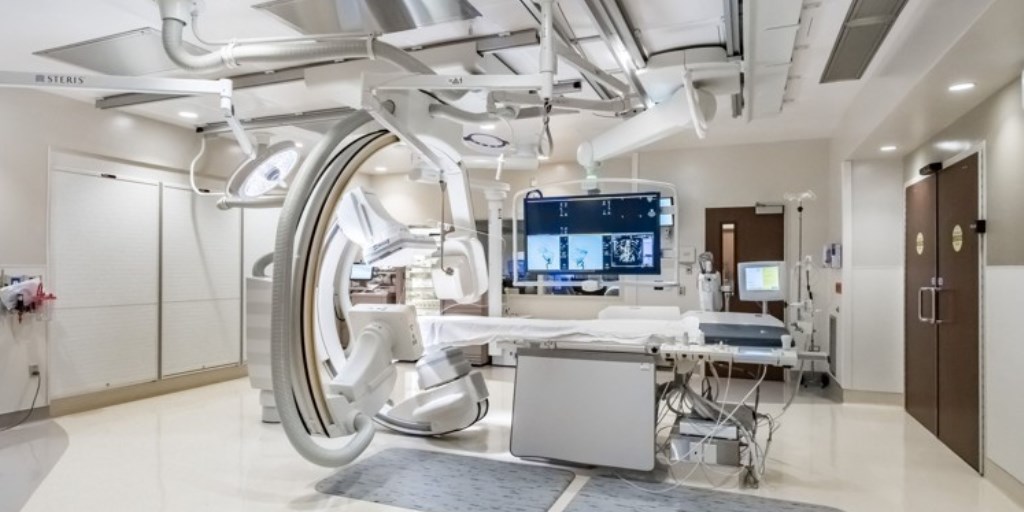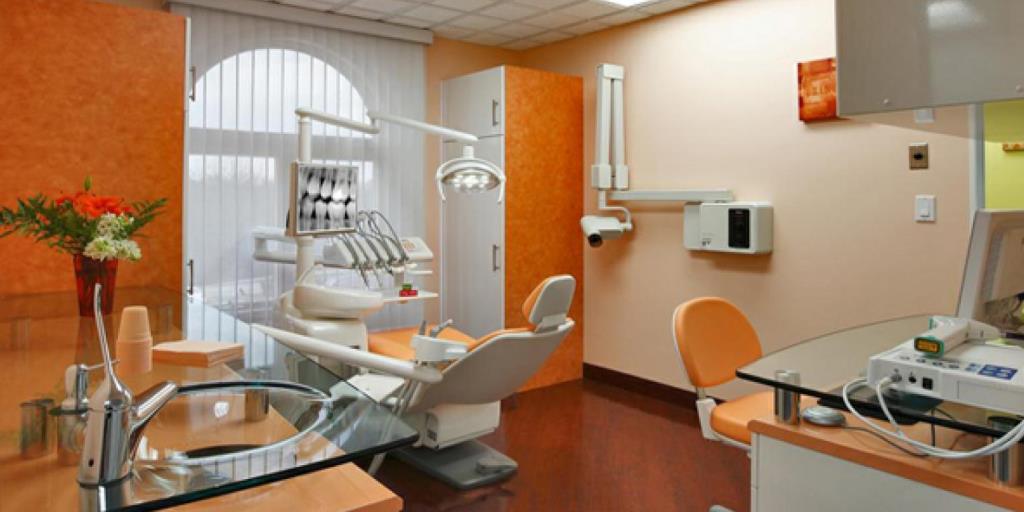

In some ways, designing and building healthcare facilities is almost as challenging as keeping the systems running efficiently and effectively, according to the speakers at our recent Seattle Healthcare event. Making projects pencil and providing the best possible design once they do are certainly no easy tasks in a time when uncertainty is the new norm in the healthcare industry.
Right out of the gate, our Healthcare Paradigms panelists took up the question: What is having the largest impact on healthcare design and construction?
In Seattle, California and other markets, construction costs are climbing — mostly because of the cost of labor, the speakers said. Subcontractors can be selective about the projects they undertake. That is a complete turnaround from seven or eight years ago.
It is good that Seattle is a booming market, but that puts even more pressure on developers to contain construction costs. For developers and designers of healthcare facilities, that is especially true, since healthcare space is so specialized and its construction is more labor-intensive than other property types.
Some of the projects on the books do not pencil anymore, the speakers said. No one is going to pursue a project with negative return on investment, certainly not hospital organizations. Some of the healthcare developments that might have made sense only two or three years ago are on hold.
New projects will be built in the Seattle area. The demand is there, and developers will find ways to provide supply. But that is really only the beginning of the challenge.
The way facilities are built influences the way service is provided in healthcare, the speakers said. Newer designs will encourage a more collaborative atmosphere among the healthcare professionals who work there. But that is going to be hard to replicate in legacy facilities still in use, because healthcare facilities are hard to change once they are built, unless flexibility is built into the structure.
There is disagreement about what flexibility means in a healthcare setting, and whether it is even possible to use flexibility to future-proof a healthcare facility. There is also the question of how design can promote efficiencies, because providing care to patients in the most efficient way possible, without compromising the quality of care, is of the utmost urgency considering the current economics of healthcare.
Even a facility’s finishes — the way it looks and feels to patients — has a profound impact on healthcare delivery. A facility that feels harsh and unfriendly has a negative impact. It makes patients feel more anxious at a time when they need to be less anxious, and that complicates their interactions with healthcare providers, often for the worse.
Also, healthcare specialists need to design facilities to take care of the staff who work there. They need to be comfortable in their surroundings, or patient care will suffer.
The speakers on our Providers Perspective panel offered their take on providing healthcare in the current climate. The short answer: tough but doable, especially for healthcare systems always looking to provide better patient-centric care.
Virginia Mason Medical Center President Suzanne Anderson said Virginia Mason has established very aggressive goals regarding patient experience and quality of care in recent decades. She said the health system will focus on doing healthcare differently, constantly evaluating its processes to find areas to improve care, which is at the heart of the Virginia Mason Production System, a process for patient care modeled after the Toyota Production System.
The system extends to all of the Virginia Mason facilities. That includes the hospital of that name, a network of regional medical centers in the Seattle area, and the Virginia Mason Institute, providing training for the Virginia Mason Production System.
Swedish Health Services CEO R. Guy Hudson said it is important that patients receive the same high-quality care wherever they enter the system. One goal is to keep people out of the hospital by focusing on primary care and wellness and prevention. One of the system’s main strategic objectives, he said, is lowering the overall cost of care.
Swedish Health Services has five hospitals, two freestanding emergency departments, and more than 180 primary and specialty clinics throughout the Puget Sound.
The economics of healthcare is challenging, both speakers said. Of special concern right now is the possibility that the expansion of Medicaid under the Affordable Care Act will be rolled back. People newly covered in recent years will be out of the system again, and less likely to access preventive care, and thus cost the system more when they become very sick and seek treatment at emergency rooms.
Source: Bisnow

While Cleveland Clinic Florida is opening a Wellington office, it’s reportedly close to renewing a lease for its fancy medical offices at CityPlace Tower in West Palm Beach.
And the world-class medical provider is wishful about having a hospital presence in Palm Beach County — either through an affiliation with an existing hospital or by building its own facility.
“There are many areas that are growing out to the west that are underrepresented, from a hospital perspective,” said Dr. Wael Barsoum, president of Cleveland Clinic Florida, based in Weston. “So I do think there will be an opportunity to consider putting inpatient beds in that area — and in the northern area of the county.”
Cleveland Clinic isn’t planning to build a Palm Beach County hospital right now, though, especially since the regulatory hurdles are so high.
Instead, it’s focused on a plan to open medical offices in Wellington.
Nonetheless, the medical provider’s expansion isn’t exactly appreciated by Palm Beach County hospitals that have worked to boost the quality and sophistication of patient care.
During the past five years, Robbin Lee, chief executive of Wellington Regional Medical Center, said, Wellington’s care has become so strong, patients no longer need to travel to Miami — or the airport — for their health care needs.
They also shouldn’t be directed to the Cleveland Clinic’s Weston hospital by Cleveland Clinic doctors poaching patients, said Lee, a former ER nurse.
“For (Cleveland Clinic) to come in and say they are going to take patients down to Broward is disrespectful to our physicians,” Lee said of Cleveland Clinic. “It implies all their hard work is not valued. It’s disruption.”
And so it goes in the battle to win the hearts and wallets of Palm Beach County patients.
For the past decade, the county has become popular with out-of-area medical providers eager to gain a toehold in the market.
With Palm Beach County’s aging, wealthy and insured Baby Boomer population, plus the trend toward bringing medical care closer to patients, local and out-of-state medical centers are expanding their presence.
Some are opening up clinic offices, while others are forming partnerships with county-based hospitals that want the cachet and capital of larger players.
Two New York-based providers, Mount Sinai of New York and NYU Langone, are establishing medical offices in West Palm Beach, conveniently across the bridge from wealthy Palm Beach patients.
(Mount Sinai has a partnership with Jupiter Medical Center, a relationship that’s expanding through the soon-to-open West Palm Beach office.)
South Florida players are teaming up, too.
Baptist Health South Florida of Miami-Dade County signed an agreement to merge with Bethesda Health, which has two hospitals in Boynton Beach. The merger, first announced in 2015, is set to be completed on Sept. 30.
Meanwhile, Boca Raton Boca Raton Regional Hospital announced it has embarked on a process of finding a “strategic partnership” with another health care provider.
Cleveland Clinic’s Barsoum said an affiliation with Boca Raton Regional “could be complementary,” but he said there aren’t any talks going on.
Right now, Cleveland Clinic Florida just wants more of the Palm Beach County patient market population. Cleveland Clinic treats patients at medical offices throughout the county, and it handles their in-patient hospitalizations at the mother ship, the Weston hospital.
In 2007, Cleveland Clinic Florida was the first out-of-area medical provider to establish offices in Palm Beach County, opening offices in downtown West Palm Beach. Through the years, it has expanded services and treated a growing roster of patients.
It’s also reaped financial contributions from grateful patients, especially those living in Palm Beach.
Today, Cleveland Clinic has offices at CityPlace Tower and Palm Beach Lakes Boulevard in West Palm Beach, in Palm Beach Gardens and soon, in Wellington.
The Wellington office, in the works for a year, will be in the Village Green Center, at the corner of Stribling Way and State Road 7. The office will feature primary care, gastroenterology, cardiology and other services.
The Cleveland Clinic office is an affront to Lee, who said Palm Beach County hospitals work closely with each other to provide quality patient care.
“They want to put cardiologists and GI doctors here? There’s no need,” Lee said.”There are three GI groups that have been here for years and they are well-respected.”
Lee knows that Wellington Regional is sitting in the catbird seat, east of communities where thousands of homes will be built during the coming decade. Thus, she doesn’t even think of Wellington as western Palm Beach County.
“Wellington sits in central Palm Beach County now,” she said.
During her nearly five years at the medical center, Lee has worked to boost the quality and complexity of services. The hospital has a comprehensive stroke center, lung program, chest resuscitation center and neurointerventional lab, among other services.
The hospital also has an entire program created to treat the polo players who flock to Wellington annually. Player injuries require the services of orthopedic surgeons and other surgeons, plus concussion management, she said.
The hospital is adding more intensive care beds and considering additional growth, including building two more floors on a wing of the hospital, Lee said.
But Cleveland Clinic’s Barsoum still sees potential need in the area.
With the trend in medicine toward convenience, patients at Cleveland Clinic’s Palm Beach County medical offices probably wouldn’t mind having a close-by hospital for some inpatient services.
Barsoum said a “micro-hospital” could fill a need for inpatient care that isn’t complex. Micro-hospitals, featuring from 25 to 50 beds, are for patients who need hospitalization for less severe matters.
This type of hospital differs from hospitals such as Cleveland Clinic’s Weston facility, which sees complex cases. In fact, Weston is adding more critical care beds to meet demand, which means it often treats the sickest patients in the region. For them there are organ transplants, cardiac surgery, cancer treatment and neurosurgical care, among other specialties.
Barsoum said Cleveland Clinic hasn’t done enough research to consider what type of hospital could be suitable for Palm Beach County, if it decided it was interested in building one.
But Barsoum isn’t shy about touting Cleveland Clinic, which he said is enough of a draw that yes, Palm Beach County patients do travel to Weston, where the entire experience is informed by the Ohio headquarter’s renowned reputation.
“(Patients) expect a level of care that is extremely high,” Barsoum said, invoking the Ritz-Carlton hotel brand as an example of stellar service. “It shouldn’t be any different in health care.”
Source: Palm Beach Post

When Physicians Realty Trust announced a purchase of 18 medical office facilities located in eight states for about $735 million last month, the Milwaukee-based REIT didn’t just sweep up prime properties. It won a round in the business of investing in medical office buildings (MOBs), which has become increasingly competitive.
The pending purchase includes the Baylor Cancer Center in Dallas, Texas. In a statement, executives with Physicians Realty described it as an on-campus medical office building consisting of about 458,396 net leasable sq. ft. At a purchase price of $290 million and after closing, the unlevered cash yield is expected to be 4.7 percent.
The intense vying for urgent care centers, surgery centers and other outpatient medical facilities is also driving down cap rates in the sector. Cap rates on MOBs tightened to 6.5 percent in the fourth quarter of 2016, after holding steady at 6.7 percent for the three previous quarters, according to the latest information from Revista, an Arnold, Md.-based property research firm that examines all out-patient medical properties. In its cap rate report, Revista examines a relatively small sampling of four transactions in four quartiles.
Its analysis found that tightening occurred for almost all segments of the market. Among the deals with the lowest reported cap rates in the fourth quarter of 2016, cap rates averaged 4.2 percent, down from 4.4 percent the quarter prior and 4.7 percent the year prior. On transactions in the 25th percentile, with the highest cap rates, cap rates averaged 7.0 percent, flat with the quarter prior. Median cap rates averaged 6.4 percent, down from 6.6 percent the quarter before.
The tightening is an indication of keen interest among domestic and international investors, all vying for purchase opportunities that seem too scarce.
“There has been a lot of demand,” says Hilda Martin, a principal at Revista. “A lot of new investment groups are entering the sector. There is more demand for less and less opportunity, and it’s just very competitive out there now.”
The Private Equity Gaze
Private equity firms are a relatively new investor group that has been particularly eager to scoop up quality MOBs, according to Martin.
“They have historically been running at the $1 billion a year mark in acquisitions,” Martin says. “That has bumped up to $5 billion on an annual basis more recently. There is more interest—and they are not selling as much as they are buying.”
The recent upturn has been in place for about 12 to 18 months, Martin estimates. The interest among those companies is even prompting private equity firms to extend hold periods beyond the customary seven or eight years. The firms are drawn to the medical sector because it is a very stable segment. Medical practices tend to sign long-term leases and have stable occupancy and vacancy rates, too.
Private equity groups are not the only investor group circling the segment. Virtually all institutional investors, REITs, private capital investors and developers recently surveyed by real estate services CBRE indicated that MOBs meet their acquisition criteria, with 97 percent saying they preferred the property type.
The CBRE U.S. Healthcare Capital Markets 2017 Investor & Developer Survey was sent to investors and developers and received 91 total responses. Respondents indicated that:
-Their firms had allocated $14.9 billion in equity to healthcare real estate investment and development for 2017.
The market cap rate for MOBs falls between 6.0 percent and 6.5 percent, according to 39 percent of respondents, making it the most aggressively priced property type.
-They are in the market to be net buyers, according to 78 percent of respondents.
-About 27 percent of investors and developers require a minimum ground lease of 60-29 years for an investment.
-As for how cap rates are expected to move in the sector, the experts see more competition—and potential compression—ahead.
“A lot of companies are looking for sweet off-market deals that no one knows about,” Martin says. “That tends to be the sentiment when people are calling up, ‘Where can I find the opportunity?’”
Source: NREI

